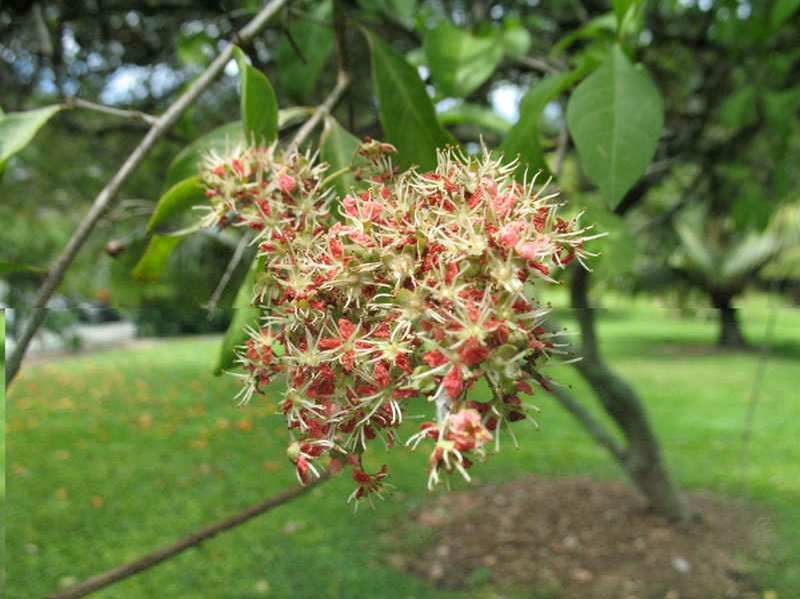Henna (Lawsonia Inermis)
Henna
Lawsonia inermis, commonly called henna, is a large, evergreen shrub or small tree with a densely branched habit. It is native to dry, coastal scrublands of North Africa, the Middle East, and portions of southern Asia, and has naturalized in parts Africa and northern Australia. Mature specimens can reach up to 20′ tall with an equal spread. The leaves are elliptic to lanceolate in shape, reaching up to 2″ long and 1″ wide, and held on slender branches armed with thorns. Terminal panicles of highly fragrant flowers bloom seasonally. The flowers are typically white, but specimens with dark pink blooms are also available. This plant has a myriad of ethnobotanical uses, including medicinal and cosmetic. Extracts of the leaves have astringent, antibacterial, and antifungal properties. A dye can be made using the leaves that can be applied to the skin, hair and nails. The flowers are used to make perfume.
Genus name honors Isaac Lawson (?-174- , Scottish army doctor who helped pay for the publication of Linnaeus’s Systema Naturae (173- .
The specific epithet inermis means “having fewer spines”, possibly in reference to another species in the genus Lawsonia.
The common name henna comes from the Arabic word for this plant.

Easily grown in rich, medium to dry soils in full sun. Adapts well to a variety of soil conditions, including heavy, clay soils and poor, rocky soils. Tolerant of drought once established. Hardy in Zones 10-1
| Hardiness zone | 10 - 12 |
| Sun light | Full Sun |
| Water | Dry To Medium |
| Maintenance | Low |
No major pest or disease problems of note.
A fragrant shrubs for mixed borders, Mediterranean gardens, and herb gardens. Can be sheared and used a hedge.
| Common name | Henna |
| Botanical name | Lawsonia Inermis |
| Plant type | Broadleaf Evergreen |
| Family | Lythraceae |
| Hardiness zone | 10 - 12 |
| Water | Dry To Medium |
| Maintenance | Low |
| Flower color | White Or Pink |
| Flowering period | Seasonal Bloomer |
| Height | 10 - 20 Ft. |
| Width | 10 - 20 Ft. |